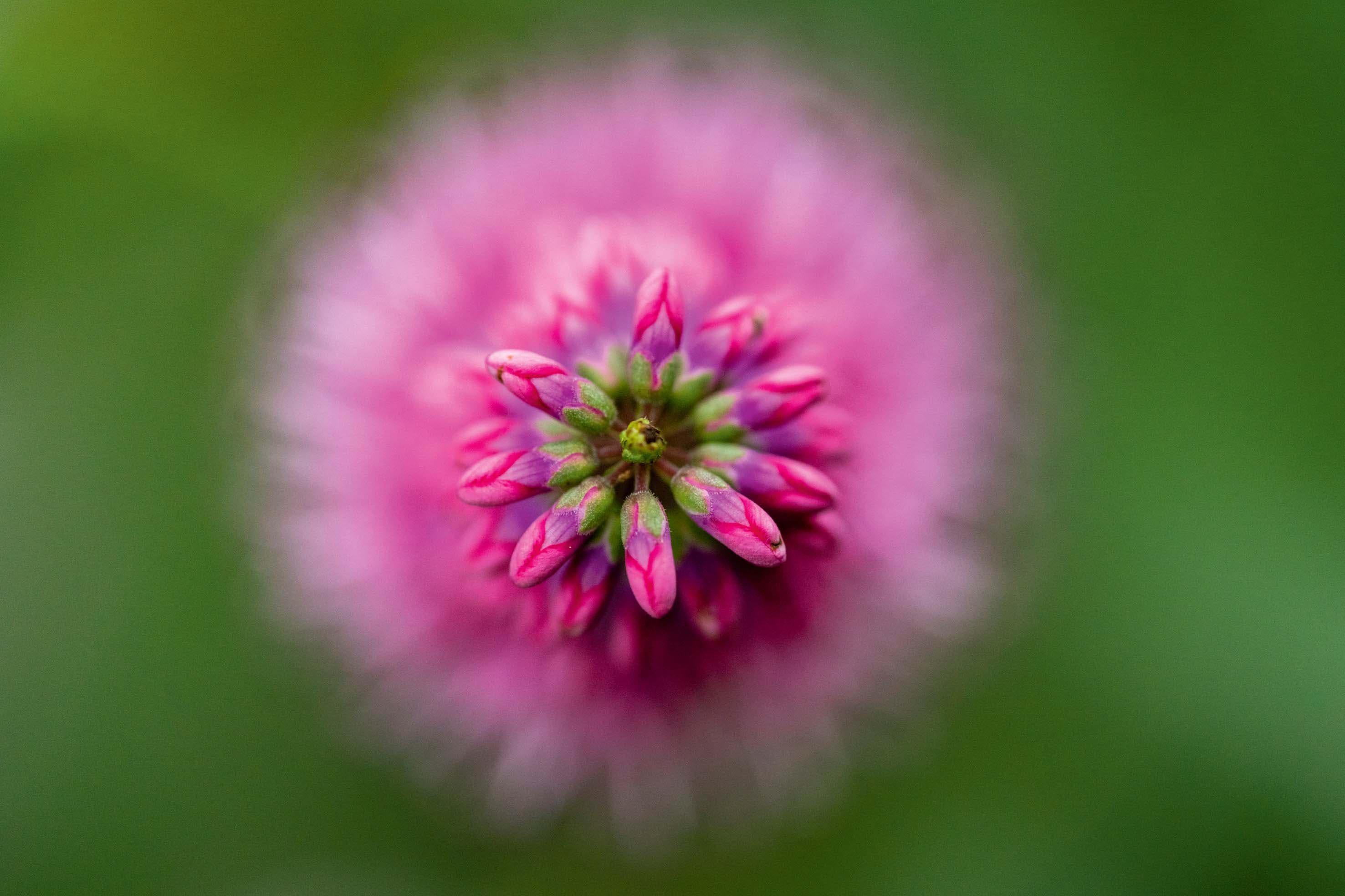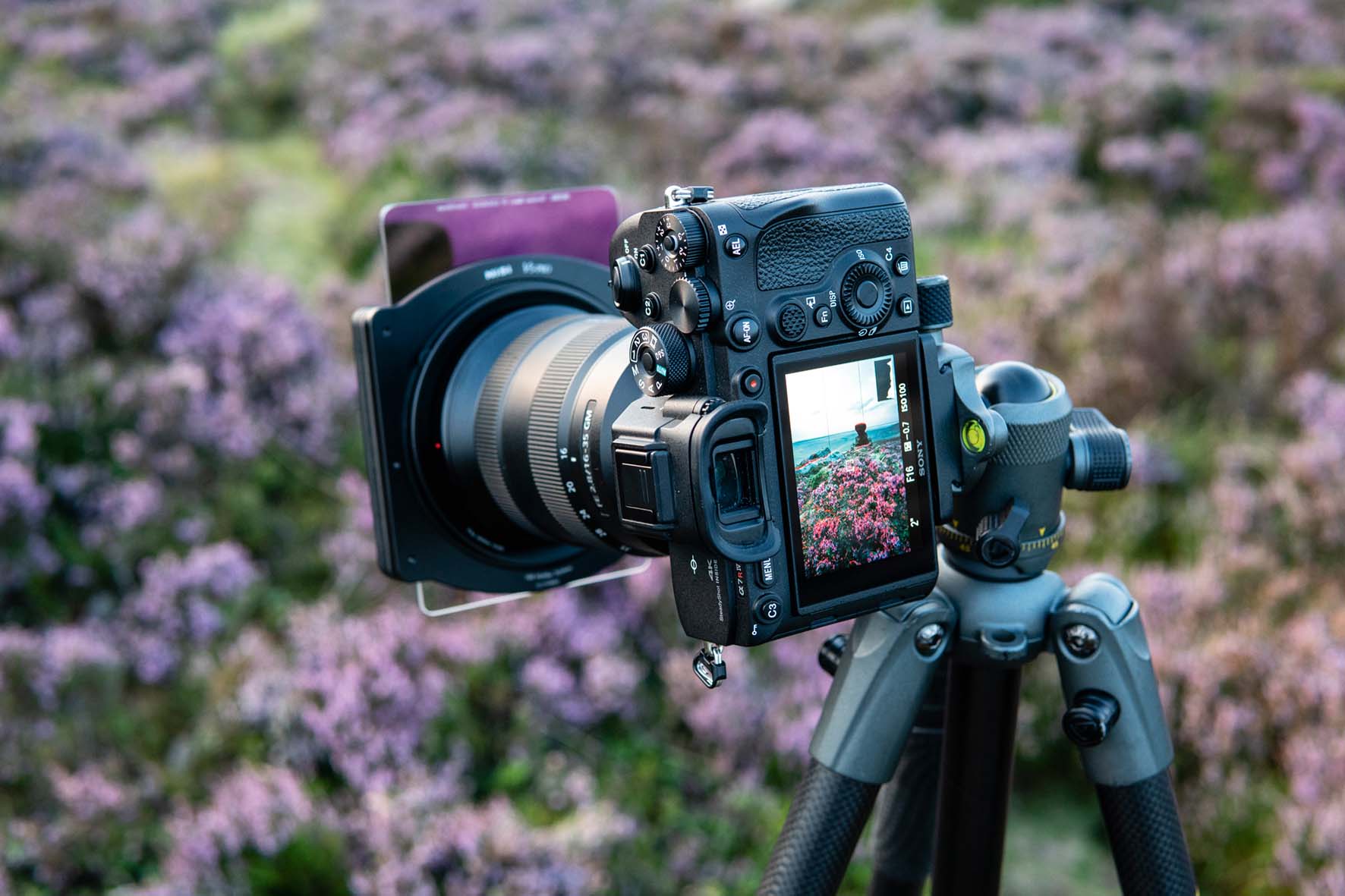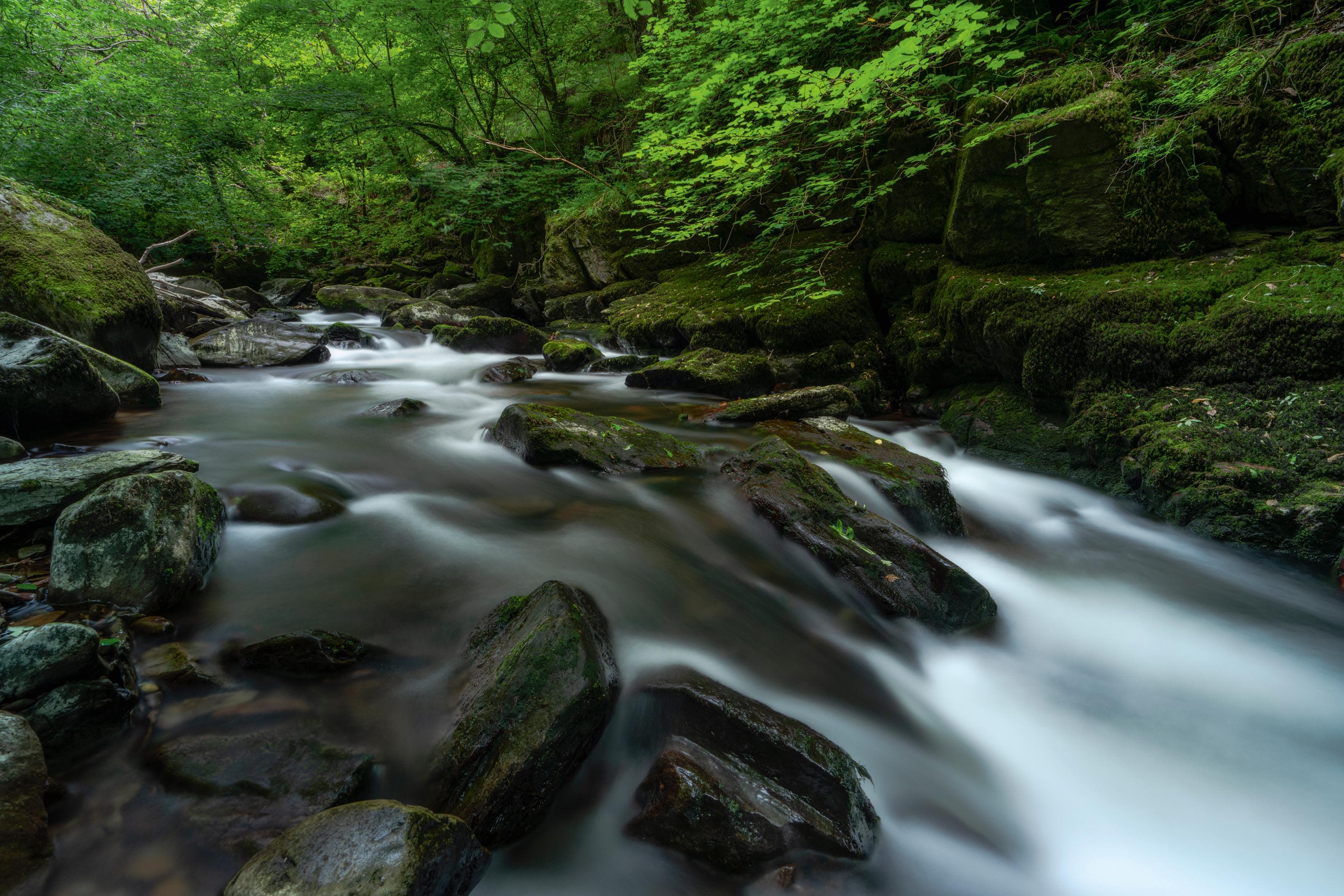
Sony A7R III Vs Sony A7R IV side by side
Sony A7R IV at a glance:
* £3,499 body only
* New Exmor R 61MP full-frame sensor
* 15-stop dynamic range
* Improved real-time eye-tracking and video eye-tracking
* 26.2MP APS-C crop mode
* 5.76-million-dot UXGA OLED Tru-Finder
* 567 phase-detection AF points and 425-point contrast-detection AF points
Every time a new camera is released, surpassing the previous model, most photographers can’t help but feel a pull at their heartstrings, and of course their wallet. I have to confess, I’m the same myself and the release of the Sony Alpha 7R IV in September 2019 caught my attention and made me consider an upgrade, which after some consideration I decided against. It’s certainly an impressive camera if you’re considering an upgrade yourself or looking into entering Sony’s full-frame ecosystem, but the A7R III is still an outstanding camera and considerably less expensive, so which model is right for you? Find out in our Sony A7R IV Vs Sony A7R III comparison.

Looking towards Lundy Island at sunset on the North Devon coast Sony A7R IV, FE 16-35mm F2.8 GM at 16mm, 3.2sec at f/13, ISO 100
I moved to Sony just over two years ago and have been happy with the change; the image quality of the A7R III is great, features are 85% of the way there and despite an unintuitive and frankly awkward menu system, there are an incredible number of controls and functions within for photographers and videographers to customise the camera to their near-exact requirements. So, when I had the opportunity to try out the A7R IV for my landscape photography I was interested to see how much better, or not, the camera actually is. And most importantly, whether my decision not to upgrade was the right one. With the memories of lockdown still fading, photography trips aren’t as numerous for me as they were up to March.
This was going to make testing the A7R IV a serious challenge, but with trips to North Devon, Norfolk and the Peak District planned, the landscape was varied enough so the weather, as always, would be the deciding factor in the success of the images I’d be able to take. And in true British summer fashion, it was as challenging as you’re probably thinking right now.
Familiar handling
I spent a month shooting with the Sony A7R IV to see how it compared to the A7R III, and when I first opened the box, I was greeted by a camera that looked, well, almost identical to its predecessor. But that in itself is a good thing because you should never have to relearn how to use an updated camera model. Things inevitably change, but you’re always looking for that sense of familiarity so you can hit the ground running and begin shooting with ease.
Shooting with the A7R IV was an extremely familiar experience too, arguably identical; the two cameras are, of course, slightly different in many ways, but still absolutely identical in others; both shoot 14-bit raw files, both offer 5-axis image stabilisation with 5.5 stops, both provide 10fps continuous shooting and the camera control layouts are identical, although a few controls have been redesigned slightly. I didn’t once use the new exposure compensation lock button that was added after user feedback about the problem of the A7R III dial getting nudged between settings and causing the camera to display a warning. It’s happened to me numerous times and only takes a split second to remedy.
Plus, locking a dial that’s used so frequently for landscape photography feels counter-intuitive, even if it is just a button. The grip of the A7R IV has, however, been vastly improved to provide more comfort and a better grip of the camera. The A7R III feels good in the hand, but the updated grip on the A7R IV is certainly more comfortable and provides additional comfort when the camera is paired with larger telephoto lenses, for instance. On the one hand, it’s a shame that the R series cameras are increasing in size and weight, but on the other they most certainly handle better than earlier models so we may find the size and weight of the camera bodies have reached a plateau.
I recently shot with the original Sony A7R for an Amateur Photographer feature earlier in the year, and one of the first things that struck me about the camera was how much smaller it is than the A7R III and A7R IV. When the A7R was announced back in October 2013, mirrorless cameras were in their relative infancy, and the drive behind camera design was all about bodies that were smaller and lighter than DSLRs. Compared to the most recent two models, the A7R is extremely svelte and only weighs 465g compared to the A7R III at 657g and the A7R IV at 665g, all with a battery and memory card installed. Considering the new, heavier and much-improved NP-FZ100 battery used by the two newer cameras, and the larger grip of the A7R IV, the weight and size increases are minimal between the first and most recent iterations of R series camera models, but further size and weight increases would negate some of the benefits of mirrorless cameras.
A small and most welcome improvement of the Alpha 7R IV is that the active focus point can be set to white or red, rather than the black/grey of the A7R III, and turns green when focus is locked on. This certainly makes setting the active focus points over darker subjects much easier. This is just a minor improvement, but more impressive updates include a new Exmor R 61MP full-frame sensor with a 15-stop dynamic range (the A7R III also has a 15-stop dynamic range), 567 phase-detection AF points and 425-point contrast-detection AF points, wireless file transfer and camera control from a computer, a 26.2MP APS-C crop mode, a 5.76-million-dot UXGA OLED Tru-Finder (EVF), upgraded weather sealing, improved real-time eye-tracking for humans and animals and video eye tracking.
Image quality and file sizes
Image quality is, as you’d hope and expect, undeniably impressive with detail and colour captured consistent with previous A7R series cameras. Noise handling doesn’t appear to be different from the A7R III, which is impressive considering the higher resolution but disappointing considering the new sensor and processor – you’d just expect it to be much better. But putting this into perspective, both the A7 III and especially the recently announced A7S III should be more suitable for photographers and videographers who need to shoot at higher ISO settings yet demand excellent noise handling.

In this ISO 1600 handheld macro shot, noise handling is no better than the A7R III. Sony A7R IV, FE 90mm F2.8 Macro G OSS, 1/200sec at f/2.8, ISO 1600
The ISO range of both cameras is ISO 100-3200, expandable to 50-102,400 for stills. So, it’s at ISO 100 for both cameras where you can take advantage of the 15-stop dynamic range of their different sensors. 15-stops is fantastic and provides the ability to recover a great deal of shadow detail when necessary, but the nature of blown highlights still requires the use of either ND grad filters to balance exposure and maintain detail in brighter areas of the frame or to use bracketed exposures to create HDR images.
Both cameras feature the same single and continuous bracketing options for shooting exposures for HDR, but this, of course, requires more images to be taken and additional post-processing. File sizes are noticeably larger than those from the A7R III when editing in Lightroom and Photoshop, particularly when working with multiple files to perform tasks such as creating HDR images, panoramas and focus stacking – all of which are common techniques for landscape photographers.
A computer with a fairly recent processor and plenty of RAM is essential, as indeed it is for the A7R III – they both produce large image files when working with both 8-bit and 16-bit TIFFs. Comparing identical single layer images taken with the two cameras in Photoshop provides interesting information about how the two differ, and the jump in resolution ultimately provides a greater jump in file size than it does image dimensions. 61MP looks like a lot more than 42.4MP on paper, but this creates an L-shaped enlargement where image dimensions aren’t quite as different as you might first think. The A7R III is 42.4MP and produces 7952x5304px images, with dimensions of 67.3×44.9cm at 300ppi. The 16-bit TIFF was 241.3MB, 8-bit TIFF 120.7MB, and full-res JPEG was 21.2MB. With the A7R IV, 61MP produces 9504x6336px images that are 80.5×53.6cm. So, give or take, that’s only an extra 13cm on the long edge and 9cm on the short edge when it comes to printing.

Chain detail shot in the rain at Clovelly Quay in North Devon. Sony Alpha 7R IV, 16-35mm F2.8 at 34mm, 1/125sec at f/5.6, ISO 250
The 16-bit TIFF came in at 344.6MB, the 8-bit TIFF at 172.3MB, and the full-res JPEG at 29.7MB. File sizes have taken quite a leap, but you can’t deny how useful the extra space for cropping can be. But I’m not sure that all the extra storage space and processing time of the larger A7R IV files is worth the ability to crop sloppy compositions. Shooting with the A7R IV felt almost identical to shooting with my A7R III, and the only significant difference came when editing 16-bit TIFFs and multiple exposure images that combine several, you guessed it, 16-bit TIFFs.
But that’s part of a standard professional landscape and indeed portrait editing workflow to help avoid banding and poor quality cloning. Photographers need powerful computers, but even with an i7 processor, 32GB RAM and GPU acceleration in Lightroom and Photoshop, performing a range of tasks took longer than with A7R III files. I could easily live with this because it wasn’t unworkable, but it certainly would ultimately slow my workflow when editing large numbers of images. That said, the higher resolution of the A7R IV will naturally be attractive to photographers who sell prints, but, and there’s always a but, the Preserve Details 2.0 setting for interpolating images within the Image Size dialogue in Photoshop is so effective that you can double the size of high-resolution images with no perceptible loss of image quality.

The Alpha 7R IV has a new 61MP sensor and improved body, but for £1,000 more than its 42.4MP predecessor
This means that you can create high-quality interpolated images from the A7R III that can be of equal or greater dimensions to the A7R IV if you wish, and interpolation is a common requirement for making prints larger than is natively possible with any camera. This certainly takes the higher resolution of the A7R IV out of the equation to a degree, and if you’ve never interpolated images using Preserve Details 2.0 it’s worth testing because the results are impressive when working with high-res images. Interpolating low-res images will always produce poor results because there are fewer pixels for Photoshop to work with, but with 16MP images or above the results are great.
The Sony A7R III or A7R IV?
It’s not often that this section of a field test is one of the longest, but it’s the most important this time because there’s a lot to play for – not least a price difference of £1,000 and a handful of features that will be game-changers for a few, but negligible for many.
So, should you go for the £2,499 Alpha 7R III or the £3,499 Alpha 7R IV? In reality, this is an extremely difficult question to answer because although the upgrade has produced an excellent camera, albeit one that feels okay rather than wow, everyone has different reasons for buying a new camera and I’m not sure the A7R IV necessarily addresses enough of them. It’s undoubtedly an amazing camera, but a £1,000 saving is a significant benefit of the A7R III, not to mention the slightly smaller yet more manageable file sizes.

When it comes to macro the A7R IV offers no appreciable advantage over its predecessor. Sony A7R IV with 90mm macro lens.
For me though, having only purchased my A7R III in April 2018, I’ll be hanging onto mine for a while yet because it does everything I need and more, despite not being perfect. Image quality is fantastic, and the improvements to the A7R IV don’t offer me anything that I need. Plus, they don’t address the deficiencies for landscape photographers I highlighted when I wrote about my move from a Nikon DSLR to the A7R III in the 29 September 2018 issue of Amateur Photographer. The upgrades certainly can’t be scoffed at; improved eye-tracking including video eye tracking; wireless file transfer; a higher-resolution EVF and extra focus points that cover more of the frame, to name but a few, are all very welcome.

This tricky high-contrast scene at Watersmeet in North Devon was recovered in Lightroom. Sony A7R IV, FE 16-35mm F2.8 GM at 16mm, 15sec at f/14, ISO 100
But for landscape photography, the ability to set shutter speeds longer than 30 seconds, possibly up to 60 minutes, as well as an on-screen timer when shooting in Bulb mode, would be extremely useful for shooting long exposures and would remove much of the tedium of shooting them. Plus, the native ISO range begins at ISO 100 like the A7R III, and taking it down to ISO 64 like the Nikon D850 would also have been useful to landscape photographers.
You may have noticed that I missed out the new 61MP backlit CMOS sensor from the list of upgrades, and my reason for this is that I don’t believe it’s necessary. Although I do understand why Sony has increased resolution – it’s a quantifiable upgrade that’s also a headline feature. But the 42.4MP of the A7R III is more than adequate for most photographers, whether amateur or professional. If you need a higher resolution than 40-50MP, you may be better off considering medium format cameras because the larger sensors aren’t squeezing so many pixels into the same area, but this, of course, brings additional pros and cons into the equation, not least of which are size, weight and portability.
So, to answer the question about which camera to go for, the A7R IV is a fantastic option that’s arguably best if you need the higher resolution and can truly benefit from the new features; perhaps if you’re a studio photographer and need wireless image transfer and camera control from a computer, or a sports or wildlife photographer who can benefit from the 26.2MP APS-C crop mode to add reach to lenses. But if you’re thinking about moving to Sony’s full-frame mirrorless cameras, are happy with a slightly lower-resolution sensor, and don’t require any of the new features, you could save yourself a grand with the A7R III to put towards your first G Master lens. But either way, you’re onto a winner.
Balancing larger lenses
While the newly designed grip of the A7R IV makes using telephoto lenses such as a 70-200mm even more comfortable than the A7R III, you still may find that longer lenses such as the FE 200-600mm F5.6-6.3 G, FE 400mm F2.8 OSS GM and FE 600mm F4 GM don’t quite balance with the compact camera body. In this situation, and when you frequently shoot handheld in portrait format, the VG-C4EM vertical grip is a great way to add vertical shooting comfort and greater camera/lens balance when shooting with large telephoto lenses. You can also use one or two batteries with the grip to prolong shooting time without the need to change batteries. At £399 it’s an expensive accessory and third-party clones are available, but whether they offer the same level of weatherproofing is highly unlikely.
More reading
Sony A7R IV versus A7R III
Which are the best mirrorless cameras you can buy?






